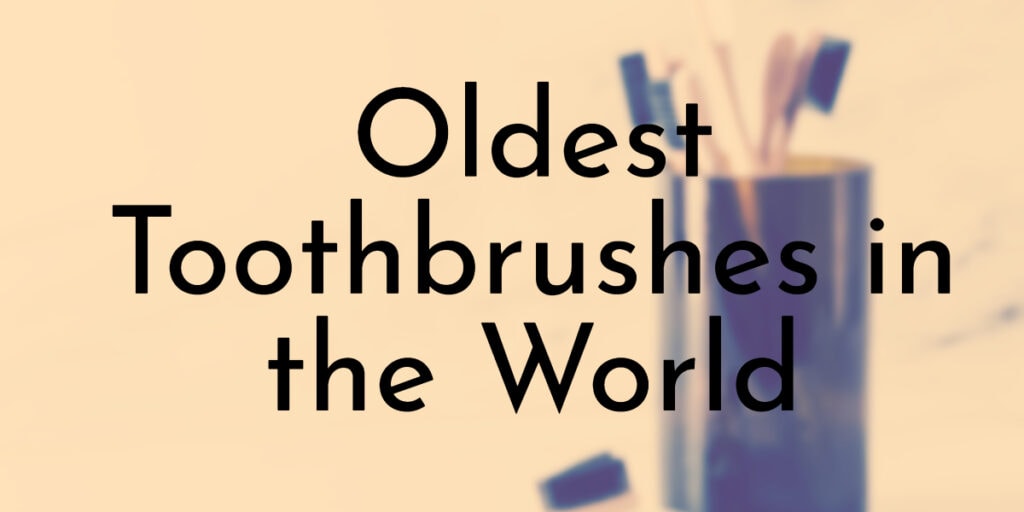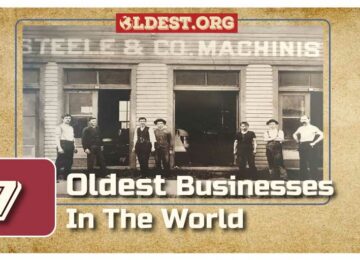Human teeth and gums need to be clear of plaque to prevent cavities and gum disease. Thus, toothbrushes are a crucial tool. A toothbrush has been an essential part of human life for centuries. It has been used for cleaning the teeth and mouth, mainly for hygiene purposes.
A toothbrush is a small brush that cleans tooth surfaces by removing plaque, food debris, and bacteria.
It is often used as a substitute for a toothbrush head in case one breaks or becomes lost. The idea of a toothbrush dates back to the earliest human civilizations hundreds of years ago. It’s amazing to observe how these technologies’ development progressed through time; these devices have undoubtedly improved and been perfected.
In this article, we will take a look at the top 8 oldest toothbrushes ever created.
8. Angle Head Toothbrush
Year Invented: 1977
Inventor: Johnson and Johnson
Origin Country: United States
Still in Production: No
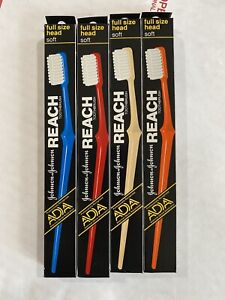
For the first time, a toothbrush with an angled head was developed by Johnson and Johnson. Cleaning those difficult-to-reach locations is simplified with the angled head. Additionally, it featured a toothbrush design that is still in use today: a higher bristle density and outside bristles that were longer than interior bristles.
In 1977, the Reach Toothbrush debuted in the United States. The basic toothbrush was transformed by its distinctive design, which had bi-level bristles, a compressed cap, an inclined head, and a multi-grip handle. As a result, plaque buildup was minimized, and oral health was enhanced with Plaque buildup was minimized, and oral health was enhanced with this brand.
Did You Know?
The Reach brand was sold off by Johnson & Johnson in 2013.
7. Broxo Electric Toothbrush
Year Invented: 1954
Inventor: Dr. Phillippe-Guy Woog
Origin Country: Switzerland
Still in Production: Yes
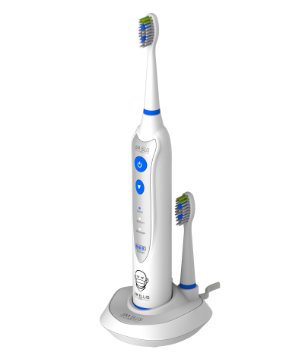
In 1954, the Swiss invented the Broxo Electric Toothbrush. The 1960s saw E. R. Squibb introduce the item under the trade name Broxodent in the United States. The product is still accessible right now. But, technically speaking, its claim to be the first battery-powered toothbrush is incorrect.
Still, the invention was essential to the development and popularity of electric toothbrushes in the United States and elsewhere on the planet.
The primary complaints against the Broxodent were that they occasionally became rather heated after extended usage and that, in the event that the cable ever broke, the entire device had to be tossed aside, which was quite costly.
Did You Know?
According to reports, the original Broxodent was a very sophisticated gadget. It was small and sleek because it could be plugged into a regular wall socket rather than the large batteries that were used in the 1960s.
6. Nylon Bristles
Year Invented: 1938
Inventor: Wallace H. Carothers
Origin Country: England
Still in Production: Yes
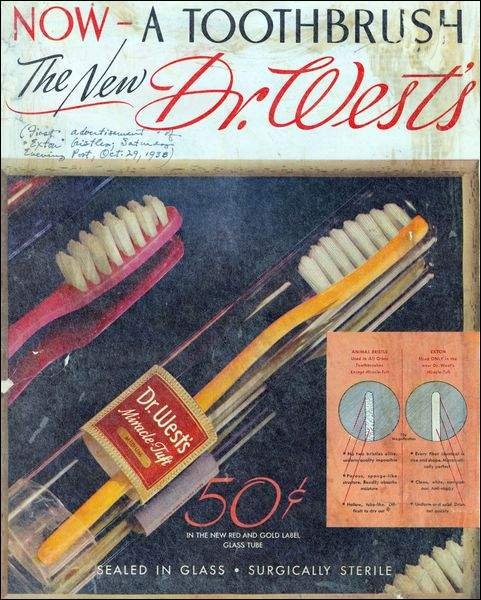
The discovery of nylon for Du Pont by scientist Wallace H. Carothers is undoubtedly the most significant in the existence of the toothbrush. This invention, which is sometimes linked to modernization in general, produced numerous more goods in addition to nylon stockings and toothbrushes that were more reasonably priced.
Bristles made of nylon swiftly replaced those made of animal hair because they were more hygienic and economical. Yet, strangely, 10% of toothbrushes sold globally still have boar hair bristles, although they are susceptible to bacterial development, frequently fall off, and do not dry well.
Did You Know?
Due to their improved sanitary qualities, the new nylon-bristled toothbrushes were marketed as “Doctor West’s Miracle-Tuft Toothbrush.”
5. Three-row Bristle Brush
Year Invented: 1884
Inventor: Dr. Meyer Rhein
Origin Country: United States
Still in Production: Yes
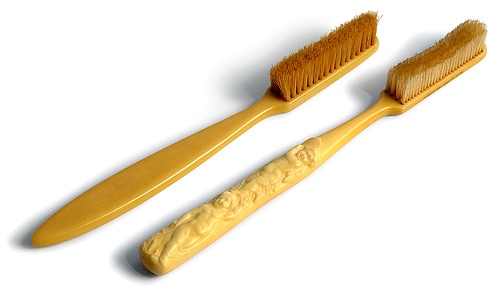
Mass-produced toothbrushes were widely accessible in the 1800s, not just in Britain but also in Japan, France, and Germany. The ordinary person’s toothbrush often had pig bristles, whereas expensive toothbrushes around this time frequently had badger hair. The first three-row brush was created in 1844, further refining Addis’ design.
In 1857, Dr. H. N. Wadsworth received the very first toothbrush intellectual property rights ever issued in the United States. The first toothbrush with three rows of bristles was created in 1884 by New York dentist Dr. Meyer Rhein, and in Massachusetts, commercial production of toothbrushes began in 1885.
Did You Know?
His mass-produced toothbrush was based on this prototype, which the same firm is selling to this day in the UK, where it is still sold in 70 million units annually.
4. Dental Floss
Year Invented: 1815
Inventor: Levi Spear Parmly
Origin Country: New Orleans
Still in Production: Yes
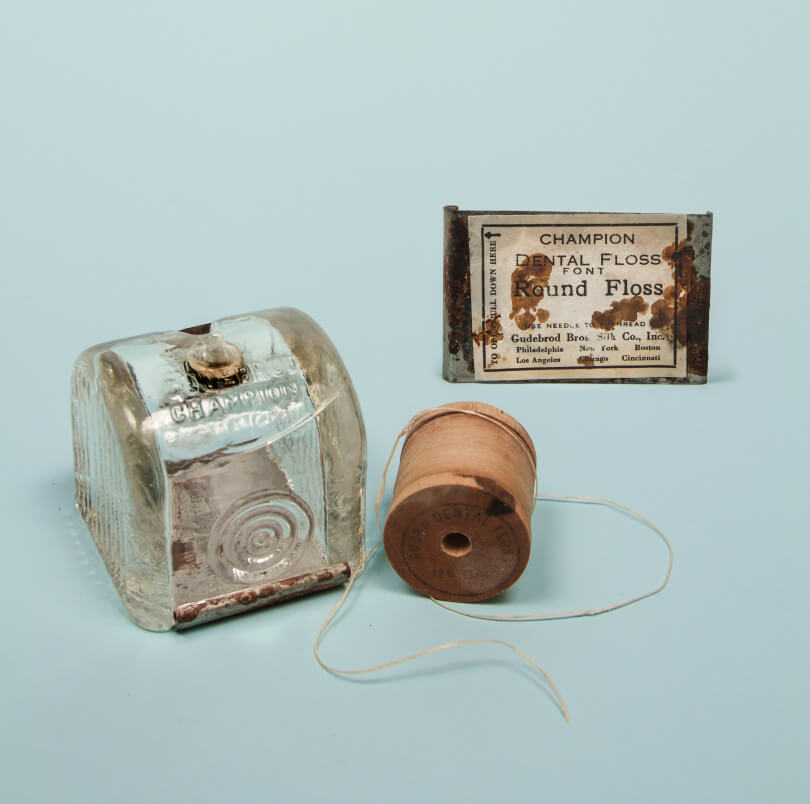
Grooves for floss and toothpicks have been discovered in the teeth of ancient people. However, floss didn’t become popular until 1815, when a dentist from New Orleans named Levi Spear Parmly advertised it using a strand of silk thread. Later, Levi gained recognition for developing the original type of dental floss.
Unwaxed silk floss was first produced in large quantities for commercial usage by the Codman and Shurtleft Company in Randolph, Massachusetts, in 1882. However, the first dental floss patent was granted to Johnson & Johnson in 1898. Following that, Dr. Charles C. Bass created nylon floss, which, thanks to its flexibility, performed better than silk. Today, nylon is still used to make floss.
Did You Know?
Flossing took some time to become popular. Instead of sticking their hands in their mouths to draw a thread between their teeth, Victorians were more fascinated by toothpicks.
3. The First Mass-Produced Toothbrush
Year Invented: 1780
Inventor: William Addis
Origin Country: United Kingdom
Still in Production: Yes
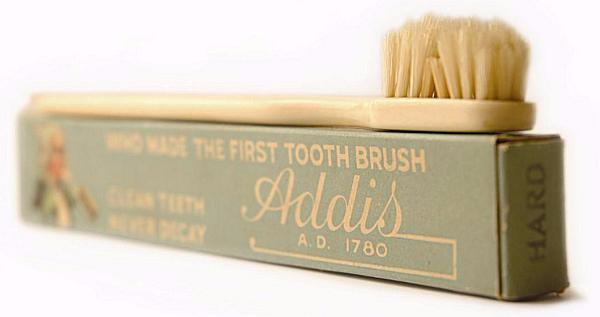
America trailed behind England in toothbrush production for the general public. Then, around 1780, William Addis of Clerkenwald, England, became the first to mass-make toothbrushes.
While he was imprisoned, his design—which was quite similar to the appearance of contemporary toothbrushes—came to completion. Addis, along with the other convicts, was only permitted to brush their teeth with rags and soot, but Addis had a reasonable grasp. He drilled holes in a bone from an animal and threaded hair bristles through them.
Did You Know?
His mass-produced toothbrush was based on this prototype, which the same firm is selling to this day in the UK, where it is still sold in 70 million units annually.
2. Bristle Toothbrush
Year Invented: 619
Inventor: Chinese
Origin Country: China
Still in Production: Yes
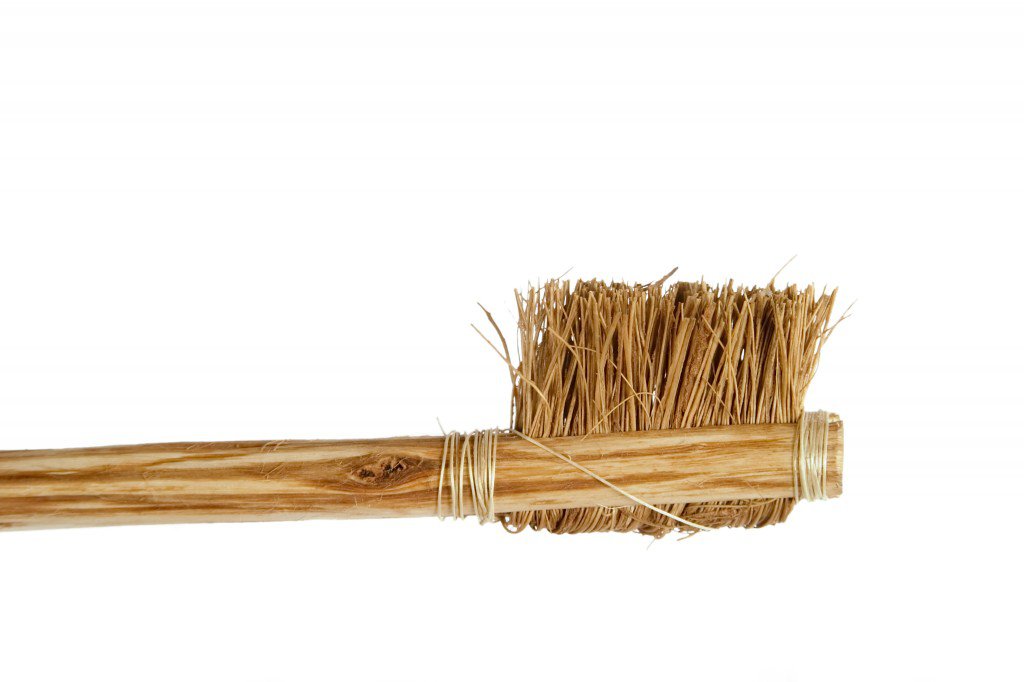
Due to the challenging environment, hogs in Siberia and Northern China developed extremely stiff hair, which produced a strong bristle substance. Bristles were placed in relatively small holes drilled in bone or bamboo. Dgen Kigen, a Japanese Zen teacher visiting China in 1223, recorded in writing the usage of the tool to tidy teeth by Northern Chinese monks.
During the Tang Dynasty, the Chinese created the first bristle toothbrush, which was probably produced from the coarse hairs of a pig raised in a cold region. For the following few hundred years, boar bristle toothbrushes served as the industry standard in China and Europe, but some Europeans switched to softer horse hairs.
Did You Know?
The handles might have been made of bone or bamboo and were adorned with pig’s neck bristles.
1. Babylonian Chew Sticks
Year Invented: 3500 BC
Inventor: Babylonians
Origin Country: Babylon
Still in Production: No
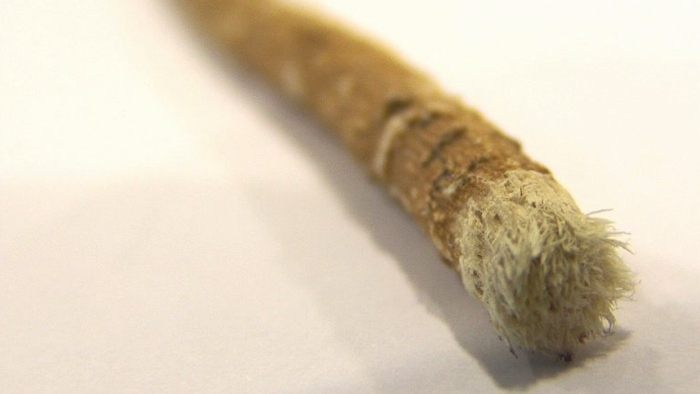
The Babylonian Chew Stick is the oldest toothbrush ever created in the world. Ancient Babylon is where the first mention of ancient toothbrushes initially appears. Chew sticks that date to 3500 BC were discovered near buried Babylonians.
The graves of the ancient Egyptians have also yielded these chewing sticks. Their forebears, known as miswak or mswaki sticks, are still widely used in several parts of Asia, Africa, the Middle East, and South America.
These crude toothbrushes were twigs that served two purposes: one end, which was sharpened and made into a toothpick, was blunted by a rock, and utilized for brushing. The ancient Chinese, Greeks, and Romans all employed “chew sticks,” as did the ancient Egyptians.
Did You Know?
The Salvadora persica tree, commonly called the “toothbrush tree,” is used in Africa to make chew sticks.


